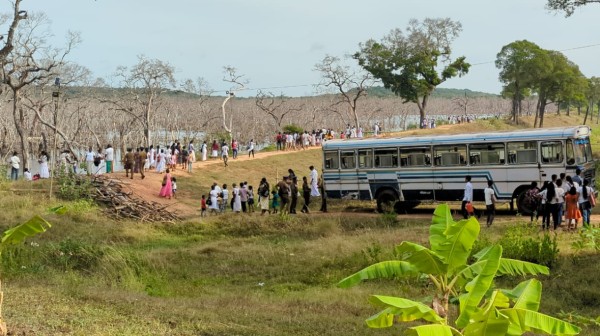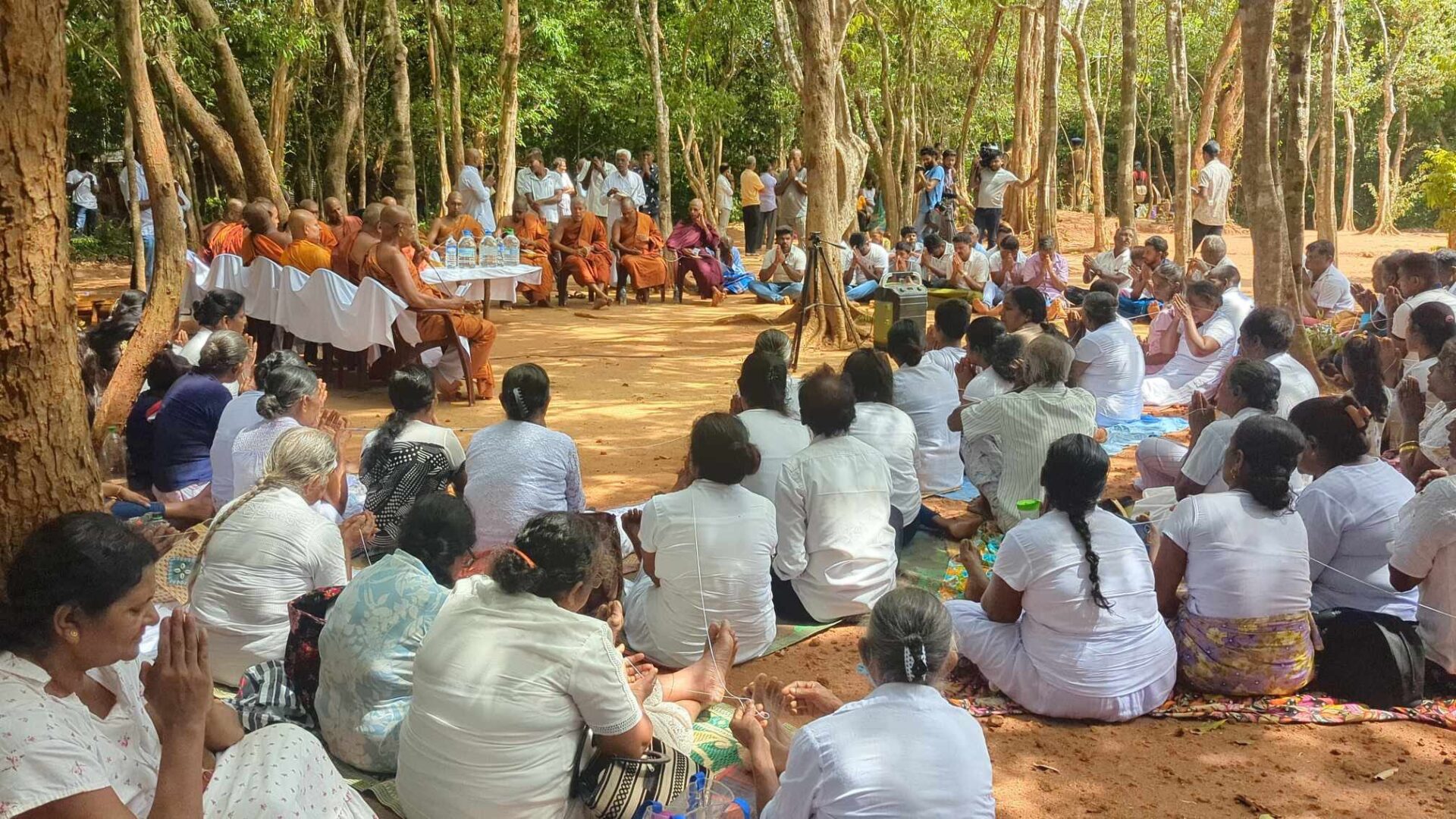by Nillanthan Maha, August 19, 2023
[translated from the Tamil by Google Translate with some improvements by the Editor]
Kurundur Hill; Vedukunari Hill; Paralai Murugan Temple; Taitti; Thirukonamalai, Periyakulam, Uchippillaiyar hill; Madhavanai Peacock grazing land; Is Ravana Tamil or not? Mervin de Silva will behead Tamils…. In recent times the attention of Tamil parties, activists, media is drawn in different directions. One issue per week or one per day attracts the attention of Tamil people. attracts.
Somewhere a new vicar is built, or somewhere an archeological symbol is expropriated, somewhere a piece of land is measured or taken away, or some Sinhala politician speaks openly against the Tamil people….so often new issues crop up. Tamil politicians, activists and media focus on new issues.
Thus, by focusing the attention of the Tamil community on successive new issues, is the power of the Tamil struggle being deliberately dissipated? Is the government deliberately “following trends”?

Sarath Veerasekhara says that Ravana was not a Tamil king. Marvin de Silva says…that he will kill the heads of the Tamil people if they oppose the construction of temples. Our parliamentarians are answering all of them. These are not answers that need to be answered in a minute. They plan and distract the Tamil people. They plan and provoke the Tamil people. Tamil parliamentarians, political activists and parties should not go as far as the government wants or the Sinhalese Buddhist extremists to pull them in this matter. We need to approach things calmly. Government or Sinhalese Buddhist nationalists plan and set trends. Tamil people don’t need to follow that trend. Do not wander.
In this matter, the Tamil people should gather as people who make decisions from one center, as people who understand affairs from one center, and as people who approach anything from one center. The Tamil people need to understand the issues in their aggregated form, in terms of the political ideology behind them, in an overall picture. Otherwise the government will achieve what it wants by further distracting the attention of the already dispersed Tamil people.
I am not here to talk about the unity of the parties. Several months ago I had a conversation with the Tamil National Front during the issue of who is to be elected as an outsider in the Karainagar Pradeshiya Sabha. Then MP Gajendran told me… “We will immediately resolve the issues you point out in matters like caste disparities. But please don’t ask us for only one thing called unity….”
This article does not talk about the unity of parties. It talks about uniting the Tamil people as one nation. Nationalist politics means gathering a large group of people. Tamil people should face issues as a large group: as a nation. In practice, when Tamil people become a nation, building a national movement with only saints, believers and true people is the story of Ambuli Mamak. Because a so-called crowd has different strata, different aspirations, different orientations. A crowd cannot be understood in a flat, one-dimensional way. It must be accepted that there are many dimensions within it.

There are good people and bad people in a group of people. A person can look like a nationalist at the same time and also be male dominator. A person can look like a casteist and a Tamil nationalist at the same time. A person can be a religious person and a Tamil nationalist at the same time. Nationalism is based on the theoretical interpretation of building a mass of people based on diversity. People who are religious, casteist, regionalist, patriarchal etc. cannot be nationalists. But how many of the prominent figures in the Tamil parties are so thoroughly nationalistic? Why was that problem in the armed struggle itself? How many of the fighters who were seen among the movements involved in the armed struggle were seen to have such national characteristics? This is a fundamental issue.
When it comes to a people’s movement, when it comes to a big party, there is good and bad in it. It is a reality that what is called a national movement representing a people will represent the good and bad that can exist among those people. A great people’s movement or a great national movement is not something that is built entirely of ideologues, purists and saints. In reality it is seen as connecting all the strata found in a crowd to some core. This also applies to Tamil National Movements.
A national movement cannot be built by keeping saints, good people, idealists and idealists alone, but it is a mandatory condition that those who are in the center of a particular movement or party or who are in guiding responsibilities should be relatively more nationalistic. It is imperative that the decision-makers of a party or a people’s movement should be policymakers, idealists, and have relatively more national character. It cannot be expected from all the party workers and supporters. or the responsibility of persons leading.

Therefore, when building unity, we must first accept the reality of unity within that unity. After building a unity, the parties leading that unity can think about how to strengthen and tighten that unity based on principle. If unity can be built by keeping only the saints and the righteous, the Tamil people will never become a large group.
Kobandhan against the enemy has kept the Tamil people together in relatively large numbers for the past several decades. In other words, ethnic antagonism or ethnic sentiments have largely united the Tamil people as a nation. Rather, it is not true that the Tamil people rose up as a large mass after understanding the intellectual and scientific principles of nationalism. This applies to most of all national liberation struggles throughout the world. Solidarity against the enemy is more than gathering people of ideas. Easy to assemble.
It is never going to be possible to build a Perundhira or to build a pariyakam or to build a relatively large unity i.e. to build the Tamil people into a Perundhira if possible on the basis of principle or on the basis of sacred, surrendered criteria. No group of people on this earth can be institutionalized on the basis of such sacred criteria, not only among the Tamils.
This applies not only to people’s movements but also to religious institutions. Do all religious institutions in the world maintain the sacred aspects of their source books? The same problem exists not only among religions but also among leftist movements that have rejected religions.
When institutionalizing people, it is very challenging not to institutionalize not only the strengths but also the weaknesses among those people. Those who are in charge of leadership should gradually remove those weaknesses after institutionalizing them and accepting the weaknesses that exist in the midst of a group of people. That is what is practically possible.
All the unions, civil structures and people’s organizations that have appeared so far among the Tamil people have been built with such strengths and weaknesses. There is no such thing as a holy union on this earth. There is no such thing as a purely principled union on this earth. You can’t make jewelery with pure gold. If you want to make gold ornaments, you have to mix copper in it. We have to accept the practice that there is alloy in all the gold jewelery we wear. This applies to politics as well, to people’s movements and to activist movements. If the leaders are determined. “One lion can lead a thousand camels. But one Otakam cannot lead a thousand lions. Tamil leaders must decide whether to be a lion or a camel. If not, new leaders must emerge.
Because the attention of the Tamil people is being systematically diverted. The Tamil people could not fight unitedly. It will only increase the Sinhalese Buddhist vote bank of Ranil Wickremesinghe as a negative result. If the Tamil people stand scattered and fight it will serve the enemy. If they unite and fight there will be miracles and wonders.